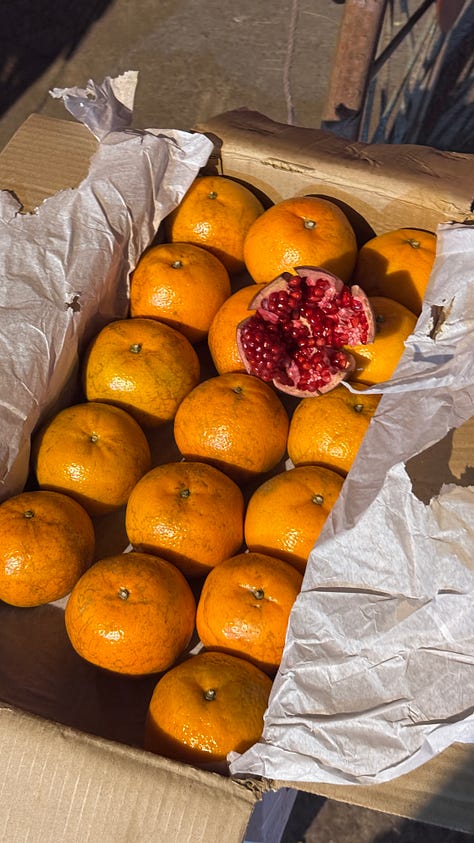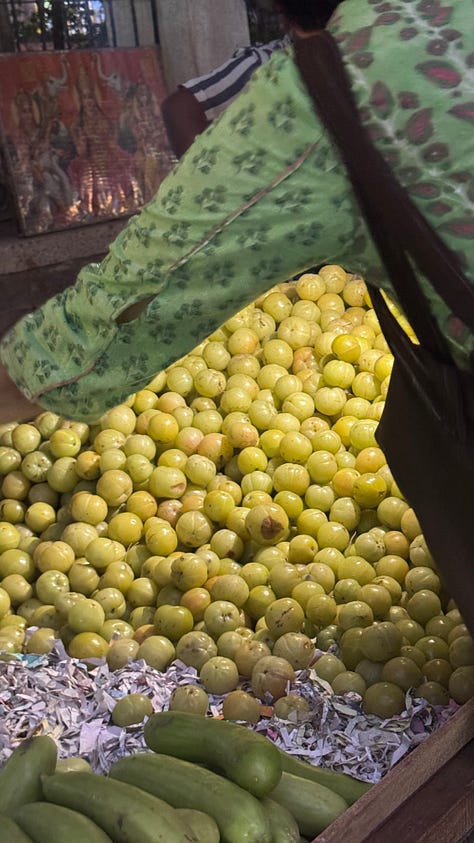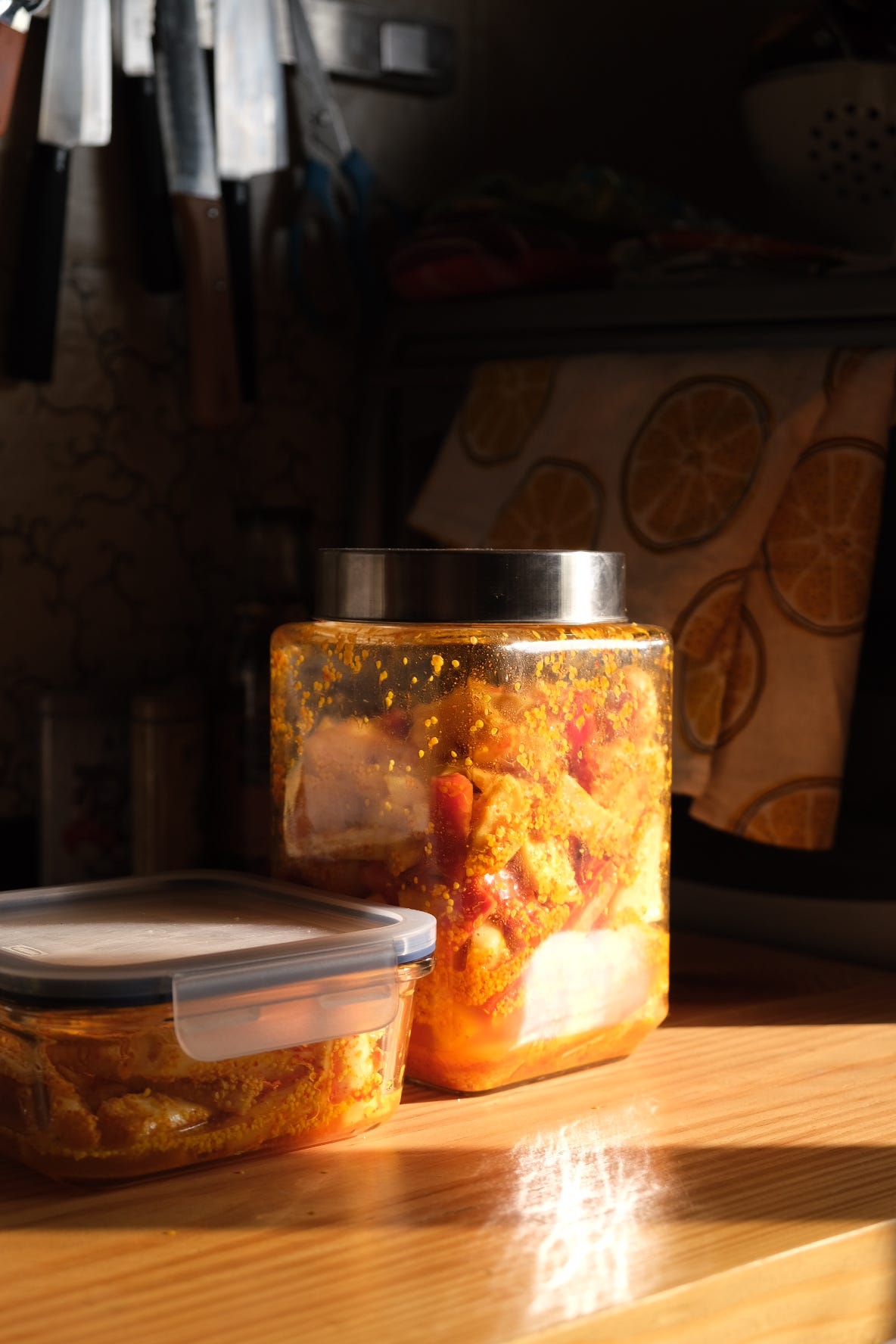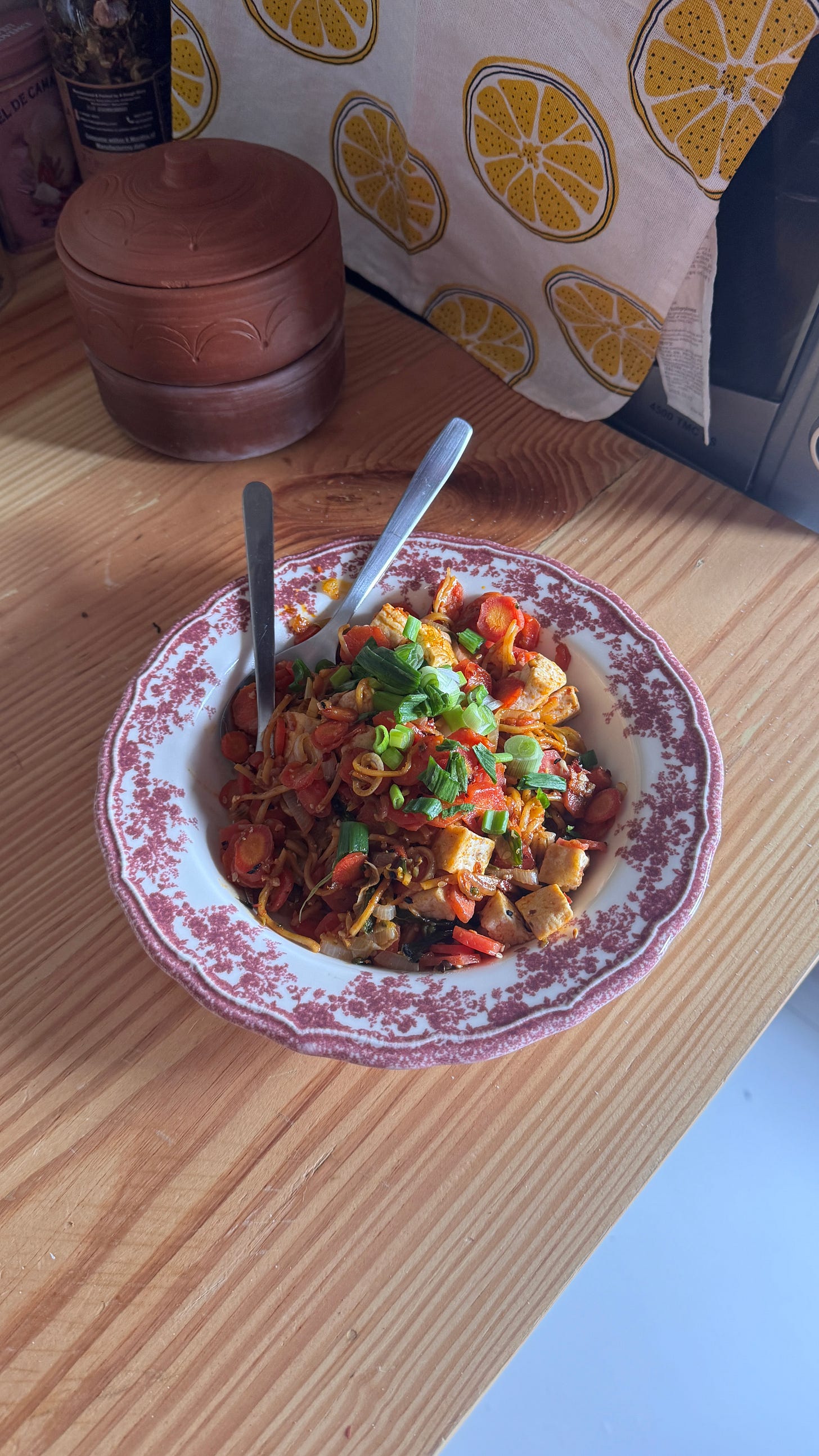On daily chores and more ☀️
Theme blurb, pitch call, deadlines + everything related to Issue #3
Issue #3 is right around the corner, and we (a small two-person team) can use your support. If you like what we do, share our magazine with people. We want the magazines to find more homes.
If you want to support our work beyond the magazine, please consider becoming a paid subscriber. Your contributions will help us keep dhoop going for longer. As a paid subscriber, you will be the first to know all about ISSUE #3 theme, get recommended readings, events info, merch drops ( yes, totes are coming back!! ) and get a full preview of past issues.
I am always scrounging for a meal or scrolling apps to decide what to eat next.



My neighbourhood, Azad Nagar, has a sprawling produce market — rasbhari (cape gooseberry), plush pink peru (guava), cleaned spring onions, big bunches of coriander, small red spherical radishes, and big kohlrabi bulbs with leafy heads — all laid neatly in the shops of vendors lined on both sides of the road. Sometimes walking there motivates me to imagine a meal in my head. Last evening, I went for a stroll with an empty tote and returned with a bunch of stuff I didn’t know I needed (I blame the fruit vendor for making me try a slice of peru and a bunch of rashbhari). I neatly wrapped the coriander in a kitchen towel, emptied the rashbhari in a bowl ( I plan to make a cape gooseberry cheong, so that I can save my favourite fruit for longer) and the remaining shopping in the produce compartment of my fridge. As I prepare for dinner, I take the leftover moong-palak dal I made for lunch and cut up some cucumber, carrots and tomatoes on the side. For additional oomph, I take a spoonful of coriander-coconut chutney on the side — it makes everything better.
I have never been one to meal prep. But the task of preparing two meals a day from scratch takes up so much of my mind space that meal prepping seems like a convenient solution. This is not like the Emily Mariko meal prep ( so satisfying to watch) , something that I can devote a full day to and then use for the entire week. I prep stuff in batches, cooking something extra so that it sustains for more than 2-3 meals. Having some condiments in the fridge also helps a lot to add flavour and make anything delicious. I have been extensively using Condiment Claire, Keertida, and Ottolenghi’s recipes to make condiments and to get ideas for seasonal, easy-to-make daily meals.
Recipes are often supporting wheels. I like to use them to guide me and then work my way around with whatever ingredients I already have in my pantry. This confidence also comes from cooking every day. I am adept at savoury cooking but not so much at the sweet stuff. And I strongly believe that, as a vegetarian, I can whip up a delicious meal fairly quickly.
Sometimes, I make lunch in between work meetings—a privilege only available to WFH people. But when I had to go to work every day, I hired a cook to pack my lunch. For the last year, I have been making my own meals every day and actively cooking. It’s the cleaning up afterward that I still don’t do. However, when I was living in the US, there was no option but to clean up after cooking/eating.
Someone has to execute this daily chore of cooking to keep a plate of food in front of you at least twice a day. The act is deeply tied to the culture of domesticity, which then becomes a gendered act of labour, mostly always dependent on women. A large part of India and the world also cooks for livelihood – making a living out of cooking for other people is not always a glamorous job. It might seem different on-screen, when chefs and cooks whip up meals with all the drama and theatre of juggling ingredients in the air. The four-cornered frame is only a peek; what happens outside of it, no one knows.
There’s also a new wave of healthy cooking/eating that has taken the media by storm. I believe it is following Joshua Weissman’s abs, that now people want to cook for health and not only for joy or views (the jury is still out). There’s a lot that can be said/asked about cooking. Do you cook? If you don’t cook, how do you manage to feed yourself? What are the implications of relying on others to cook for you? Who can/cannot cook for you?
And if cooking is only limited to standing in front of the stove? Is the process of cooking limited to that or can we include the unreal amount of thinking that goes into buying, sourcing and putting together a menu? Or if cleaning up afterward also a process of cooking? We also want to think about the design of cooking, not only in terms of how kitchens are designed, but how do people plan their days around it, how certain equipment have alleviated the load of cooking for a household and how some have made yogurt into a foam?
The third issue of dhoop, seeks to celebrate cooking as a deeply interconnected act, one that transcends isolation to embrace the transformative power of its many dimensions. We invite narratives that redefine and expand what cooking means within the context of the Global South, creating a space to illuminate invisible forms of labour, challenge the heteronormativity of kitchens—both home and professional—explore ties to seasonality and tools, and unpack the personal relationships people hold with cooking or its absence.
Cooking is an act of translation, whether it’s a daily necessity, a glamorous performance, or a means of livelihood. It encompasses the journey from working with ingredients rooted in the land, shaped by cultural or generational knowledge, to relying on others to nourish, outsourcing meals to apps, or using AI-driven devices to mechanically prepare food. Each of these practices, diverse yet interconnected, falls under the expansive and evolving umbrella of what it means to cook.
We are looking for pitches that go beyond cooking and delve deep into the spectrum of things that make cooking possible. Think of how it’s tied to nature, culture, sustainability, and design. Use it as a lens.Think of scientific deep dives, climate fiction, design-led narratives, feature stories, photo essays, and stories that highlight cooking in all its glory.
Please note that we are not looking for personal/nostalgia-driven narratives for this issue—they have already been explored extensively in food media.
Some important things to note:
Please send your pitches with the subject <ISSUE#3_PITCH> to pitch@dhoopmag.com.
We will take a week to get back to you with a response.
As an independent magazine, we usually pay writers a flat fee. If your pitch is accepted, we will notify you about the same.
We are accepting pitches till 5th February 2025.
Currently, we are also adding reading recommendations to the curated reading list for you. This will help you to look at the spectrum of work we consumed before coming up with this theme. The list will be shared in next week’s newsletter.
Food is a portal to understanding our world, our communities and ourselves. It provides a unique and critical perspective on everything—from everyday habits to global issues, from the way we design our countries, cities to how we navigate climate crises.
dhoop uses food as a lens. Through this lens, we can interrogate culture, sustainability, design and the systems that sustain life. Initially, we started as a magazine focused on stories of food and its intersections. Over time, it has grown into something more profound—a space, a research platform, embracing a multidisciplinary approach that invites collaboration and deeper inquiry.







